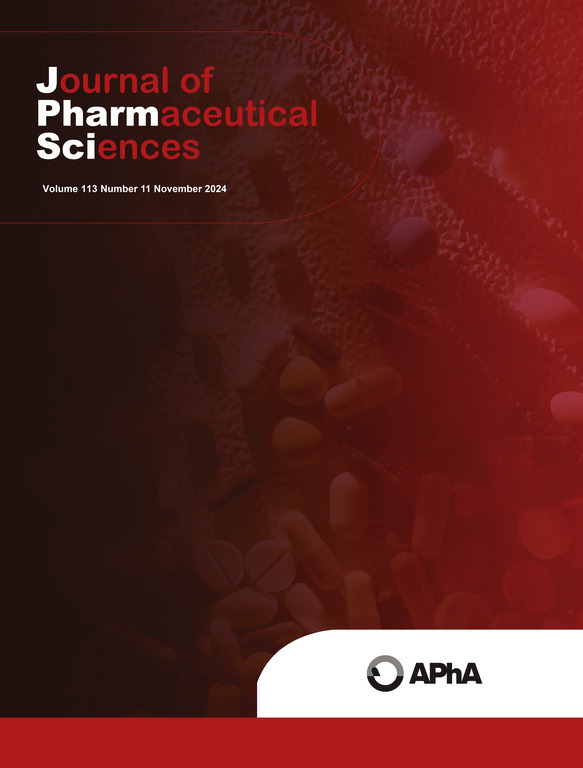Box-Behnken设计优化制备多西环素壳聚糖纳米颗粒促进糖尿病创面愈合。
IF 3.7
3区 医学
Q2 CHEMISTRY, MEDICINAL
引用次数: 0
摘要
糖尿病性伤口是与糖尿病相关的最具破坏性的困难之一,并导致严重的死亡和发病率。因此,目的是利用离子凝胶和交联技术制备负载多西环素的壳聚糖纳米颗粒(DOX-CNPs)。在Box-Behnken设计中,通过独立考虑壳聚糖、三聚磷酸钠体积比、壳聚糖和三聚磷酸钠强度等3个变量对DOX-CNPs的影响,以及与纳米颗粒性能相关的多个响应变量,对DOX-CNPs进行了优化。采用傅里叶变换红外、透射电镜、差示扫描量热仪、x射线衍射、粒径、包封效率和体外药物释放等手段对纳米颗粒进行表征。此外,我们还对DOX-CNPs进行了DPPH清除活性、大肠杆菌和金黄色葡萄球菌的清除活性和体内表征,以优化DOX-CNPs。然后将DOX-CNPs加入壳聚糖水凝胶中用于糖尿病创面的有效递送。本研究结果表明,DOX-CNPs具有自由基清除特性,具有显著的抗菌活性,并在L929成纤维细胞系的体外伤口愈合实验中增强细胞活力和迁移能力,并且在体内表现出血管,胶原沉积上皮的增加。壳聚糖可以作为dox -壳聚糖- np系统中的药物载体,以帮助开发可用于实验室和治疗糖尿病伤口的程序。本文章由计算机程序翻译,如有差异,请以英文原文为准。
Optimization and preparation of doxycycline-loaded chitosan nanoparticles using Box-Behnken design for better diabetic wound healing
A diabetic wound is one of the most devastating difficulties associated with diabetes and leads to significant death and morbidity. Hence, the aim was to make Doxycycline-loaded chitosan nanoparticles (DOX-CNPs) using ionic gelation with a cross-linking technique. In the Box-Behnken design, the DOX-CNPs were optimized by considering the effects of the following 3 variables independently, namely chitosan, sodium tripolyphosphate in volume ratio, strength of chitosan and sodium tripolyphosphate, among several response variables related to nanoparticle properties. The Fourier transform infrared, transmission electron microscopy, differential scanning calorimeter, X-ray diffraction, particle size, entrapment efficiency, and drug release in-vitro were used to characterized the nanoparticles. Additionally, DPPH scavenging activity and activity against Escherichia coli and Staphylococcus aureus bacteria and in vivo characterization were carried out to optimize DOX-CNPs. Then effective delivery of DOX-CNPs is incorporated in chitosan hydrogel for diabetic wounds. The findings of this study indicate that DOX-CNPs exhibit free radical scavenging properties, demonstrate significant antibacterial activity, and enhance cell viability and migration in an in vitro wound healing assay using the L929 fibroblast cell line, and in vivo demonstrate increased blood vessels, collagen deposition epithelization. Chitosan could be used as a drug carrier in a DOX-chitosan-NP system to help develop procedures that can be used in the lab and to treat diabetic wounds.
求助全文
通过发布文献求助,成功后即可免费获取论文全文。
去求助
来源期刊
CiteScore
7.30
自引率
13.20%
发文量
367
审稿时长
33 days
期刊介绍:
The Journal of Pharmaceutical Sciences will publish original research papers, original research notes, invited topical reviews (including Minireviews), and editorial commentary and news. The area of focus shall be concepts in basic pharmaceutical science and such topics as chemical processing of pharmaceuticals, including crystallization, lyophilization, chemical stability of drugs, pharmacokinetics, biopharmaceutics, pharmacodynamics, pro-drug developments, metabolic disposition of bioactive agents, dosage form design, protein-peptide chemistry and biotechnology specifically as these relate to pharmaceutical technology, and targeted drug delivery.

 求助内容:
求助内容: 应助结果提醒方式:
应助结果提醒方式:


